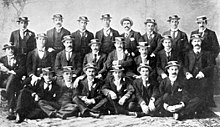
The New Zealand national rugby union team, commonly known as the All Blacks, represents New Zealand in men's international rugby union, which is considered the country's national sport. Famed for their unmatched international success, the All Blacks have often been regarded as the most successful sports team in human history.

The Bledisloe Cup is an annual rugby union competition originally staged between the national teams of Australia's Wallabies and New Zealand's All Blacks that has been contested since the 1930s. The frequency that the competition is held has varied, as has the number of matches played in each tournament, but it currently consists of an annual three-match series, reduced to a two-match series in World Cup years, with two of the matches counting towards The Rugby Championship. New Zealand have had the most success, winning the trophy in 2022 for the 50th time, while Australia have won the trophy 12 times.
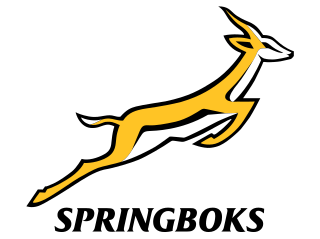
The South Africa national rugby union team, commonly known as the Springboks, is the country's national team governed by the South African Rugby Union. The Springboks play in green and gold jerseys, with white shorts and their emblem is a native antelope, the Springbok, which is the national animal of South Africa. The team has been representing South Africa in international Rugby Union since 30 July 1891, when they played their first test match against a British Isles touring team. They are currently the reigning World Champions and have won the World Cup on 3 occasions,. The Springboks are equalled with the All Blacks with 3 World Cup wins.

The New Zealand national cricket team represents New Zealand in men's international cricket. Named the Black Caps, they played their first Test in 1930 against England in Christchurch, becoming the fifth country to play Test cricket. From 1930 New Zealand had to wait until 1956, more than 26 years, for its first Test victory, against the West Indies at Eden Park in Auckland. They played their first ODI in the 1972–73 season against Pakistan in Christchurch.

The Australia national rugby union team, nicknamed the Wallabies, is the representative national team in the sport of rugby union for the nation of Australia. The team first played at Sydney in 1899, winning their first test match against the touring British Isles team.
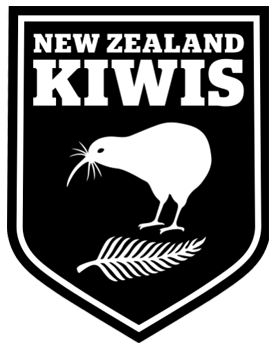
The New Zealand national rugby league team has represented New Zealand in rugby league since 1907. Administered by the New Zealand Rugby League, they are commonly known as the Kiwis, after the native bird of that name. The team's colours are black and white, with the dominant colour being black, and the players perform a haka before every match they play as a challenge to their opponents. The New Zealand Kiwis are currently second in the IRL World Rankings. Since the 1980s, most New Zealand representatives have been based overseas, in the professional National Rugby League and Super League competitions. Before that, players were selected entirely from clubs in domestic New Zealand leagues.
The All Blacks XV is the second national rugby union team of New Zealand, after the All Blacks. New Zealand's second national team has had numerous names in its history: Junior All Blacks, New Zealand XV, New Zealand A, New Zealand B, All Blacks XV.
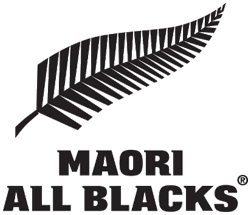
The Māori All Blacks, previously called the New Zealand Maori, New Zealand Maoris and New Zealand Natives, are a rugby union team from New Zealand. They are a representative team of the New Zealand Rugby Union, and a prerequisite for playing is that the player has Māori whakapapa (genealogy). In the past this rule was not strictly applied; non–Māori players who looked Māori were often selected in the team. These included a few Pacific island players and a couple of African descent. Today all players have their ancestry verified before selection in the team.

Timothy Grant Southee, is a New Zealand international cricketer who plays for New Zealand cricket team in all formats of the game, captains in Tests and vice captains in T20Is. He is a right-arm fast-medium bowler and a hard-hitting lower order batsman. The third New Zealand bowler to take 300 Test wickets, he was one of the country's youngest cricketers, debuting at the age of 19 in February 2008. On his Test debut against England he took 5 wickets and made 77 off 40 balls in the second innings. He plays for Northern Districts in the Plunket Shield, Ford Trophy and Super Smash as well as Northland in the Hawke Cup. He was named as New Zealand's captain for the first T20I against West Indies in place of Kane Williamson, who was rested for that game. The Blackcaps won that match by 47 runs.

The Original All Blacks were the first New Zealand national rugby union team to tour outside Australasia. They toured the British Isles, France and the United States of America during 1905–1906. Their opening game, on 16 September 1905, was against Devon whom they defeated 55–4. They defeated every English side that they faced, including a 16–3 victory over English county champions Durham, and a 32–0 victory over Blackheath. They defeated Scotland, Ireland, and England with the closest of the three matches their 12–7 victory over Scotland. The team's only loss of the tour was a 3–0 defeat by Wales at Cardiff Arms Park. A try claimed by winger Bob Deans was not awarded by the referee and later became a subject of controversy. However, Wales were generally considered the better team with the All Blacks playing particularly poorly in the first half of the game. They managed narrow wins against four Welsh club teams and went on to play France in France's first-ever test match. They returned to New Zealand via North America where they played two matches against Canadian teams. Overall they played a total of thirty-five matches, which included five Tests, and only lost once—the defeat by Wales.

The 1908 British Isles tour to New Zealand and Australia was the seventh tour by a British Isles team and the fourth to New Zealand and Australia. The tour is often referred to as the Anglo-Welsh Tour as only English and Welsh players were selected due to the Irish and Scottish Rugby Unions not participating. It is retrospectively classed as one of the British Lions tours, as the Lions naming convention was not adopted until 1950.

The first clash in Rugby Union between Australia and New Zealand took place in a test match on 15 August 1903 in Sydney, New South Wales. On that occasion, New Zealand won 22–3.
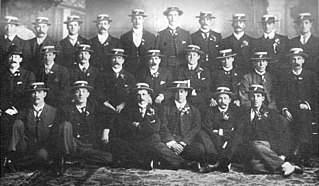
The 1903 New Zealand tour rugby to Australia was the fourth tour by the New Zealand national team to Australia. Nine matches were played against regional and district sides along with one test match between the two national sides, the first played by New Zealand in their history.

New Zealand and Argentina have been playing each other in the sport of Rugby Union since 1976.

The 1907–1908 New Zealand rugby tour of Australia and Great Britain was made by a group of New Zealand rugby footballers who played matches in Australia, Ceylon, England and Wales between 1907 and 1908. Most of the matches were played under the rules of the Northern Union, a sport that is today known as rugby league. As such, the team were the immediate predecessors of the New Zealand national rugby league team. The tour had a large role in establishing rugby league in both Australia and New Zealand, and also gave birth to international rugby league. The tour party has come to be known as the professional All Blacks or All Golds, although at the time they were commonly referred to as the All Blacks—a named popularised by the New Zealand rugby union team that toured the Northern Hemisphere in 1905.

The 1921 South Africa rugby union tour of Australia and New Zealand was the third tour made by the Springboks rugby team, and their first tour to Australia and New Zealand. South Africa played three Test matches against the All Blacks. The series was drawn 1–all, and the long-running controversy between the countries over the All Blacks' inclusion of Maori players began.
Ireland toured New Zealand and Australia in June 2010, playing a Test match against the All Blacks and the Wallabies. They also played the New Zealand Māori in Rotorua.

The 1907 New Zealand rugby union tour of Australia was the sixth tour by the New Zealand national team to Australia. Four matches were played against regional and district sides along with three Test match against the Australia national side, being the first time both teams played each other.
The Australia cricket team was scheduled to tour New Zealand in March 2022 to play three Twenty20 International (T20I) matches. The series would have overlapped with Australia's Test matches in Pakistan.
In July 2022, Ireland played a three-Test series against New Zealand as part of the 2022 mid-year rugby union internationals. Ireland also played two matches against the Māori All Blacks. This was Ireland's first tour since their tour to Australia in 2018, their first tour to New Zealand since 2012, and their first encounter against New Zealand since November 2021.
